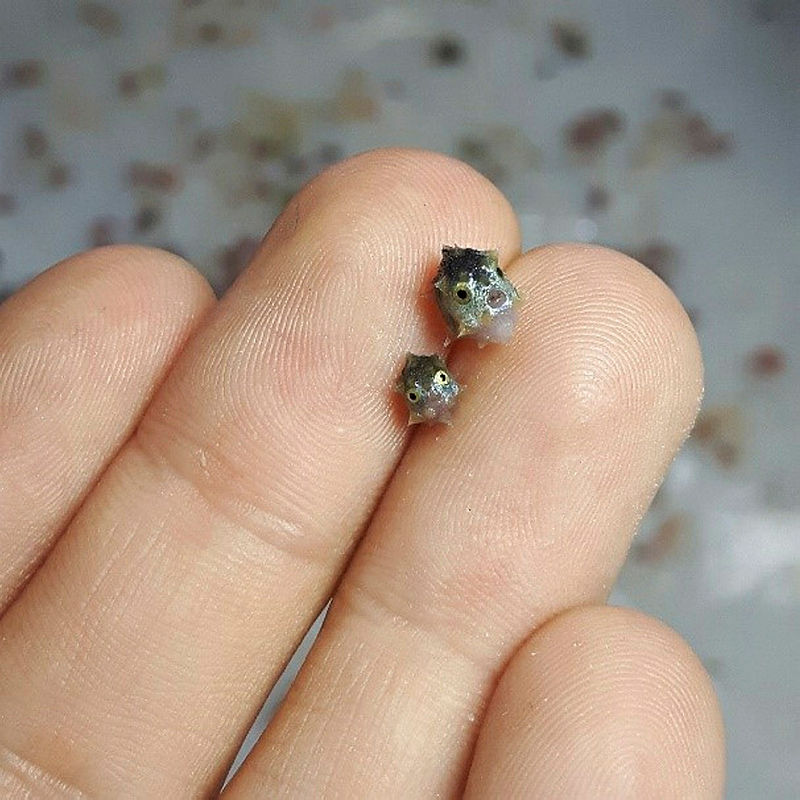No one expected the giant bump-head Mola species (Mola alexandrini) to have such a cute looking larval phase. Thanks to the combined efforts of scientists from Australia and New Zealand the early life stage of one of the world’s largest fish has finally been uncovered.
While the adult sunfish species have been described and their taxonomy determined, very little is known about the early life history of these amazing fishes. The features that are used to determine which species an adult sunfish just aren’t visible in larval specimens.
The larva of the giant bump-head sunfish is ridiculously tiny and surprisingly similar to a cartoon sun. The discovery was announced by the Australian Museum, whose collections were integral to the research.
The bump-head sunfish is one of three Mola species that occupy Australian waters and is matched in weight only by its congener, the ocean sunfish, also known as the Mola mola. It can grow to more than 3 meters (9.8 feet) and weigh over 2,000 kilograms (4,400 pounds).
It spends its life moving between the ocean depths and the sea surface where it can be found basking on its side in order to heat up under the Sun and be treated to some parasiticide grooming from gulls.
Female sunfish hold the record of the highest potential fecundity of any vertebrate, with adult Mola mola housing 300 million ova. Given their enormous ovulatory output, scientists were perplexed as to why their eggs had never been found in the wild and why sightings of their larvae were so few and far between.

To make things easier, sunfish expert Dr Marianne Nyegaard from the Auckland War Museum decided to search for answers in preserved museum specimens rather than taking on the mammoth task of trying to find the bump-head’s larva out in the open ocean.
Nyegaard worked with Australian Museum scientists, Kerryn Parkinson and Andrew King to sift through collections in search of a likely candidate. Sunfish larva unfortunately rarely resembles their adult form, which makes identification of a specific species all the more difficult.
The sample that finally gave the game away was collected off the New South Wales coast in 2017, but carrying out DNA analyses on the fragile, tiny specimen, which was just 5 millimeters in size, presented its own challenges. To minimize damage to the specimen, Kerryn Parkinson from the AM’s Ichthyology division painstakingly removed a single eyeball that Andrew King, a genomics specialist, used to conduct the DNA extraction and analysis.
“The DNA sequence from the existing AM specimen was compared to reference data generated by our international collaborators,” King explained in a statement. “A clear match from the sequence was identified with samples from an adult Bump-head Sunfish (Mola alexandrini).”
The team now hope to use their findings to identify further mola larvae sunfish collections held in museums and paint a clearer picture of the life cycle of these marine giants. Their achievement highlights the importance of museum collections and the role they have to play in continuing research as emerging technologies open up new opportunities for analysis. [IFLS]



